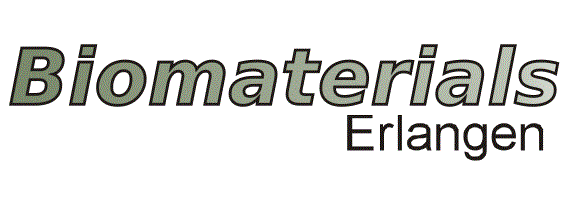Marta Braida
Marta Braida
Gaststudentin, Polyteknikum Mailand, Italien
Polyurethane based composite scaffolds containing bioactive glass for bone regeneration
Betreuer (Mailand): Prof. Silvia Farè
Betreuer (Erlangen): Prof. Dr. Ing. Aldo R. Boccaccini
In the field of bone regeneration, in the Biomaterials Laboratory (BioMatLab), Department of Chemistry, Materials and Chemical Engineering “G. Natta”, Politecnico di Milano, under the direction of Prof. Silvia Farè, a three-dimensional polyurethane (PU) foam has been synthetized by gas foaming using water as expanding agent. The PU foam has been interpenetrated with crosslinked gelatine (synthetized with a patented procedure [1]) and crosslinked gelatine loaded with bioactive glass 45S5 using the dual syringe method. At the Institute of Biomaterials in Erlangen, studies on possible mineralization process, with formation of hydroxyapatite, via incubation in simulated body fluid, and in vitro biological investigation are carried out. The goal is to investigate cell interaction and the improvement in supporting osteoblast cell attachment and viability on the obtained 3D structures, and the potential advantages of adding bioactive glass 45S5, leading to a favourable cell response, cell proliferation and eventually new bone formation [2].
[1] Tanzi M. C., Farè S., Gerges I., inventors; Politecnico di Milano. Crosslinked gelatine hydrogels. WO2012164032 A1, 2012 December 6.
[2] Gerhardt, L., C. and Boccaccini, A R., Bioactive Glass and Glass-Ceramic Scaffolds for Bone Tissue Engineering. Materials.3 (2010) (7):3867-3910.

